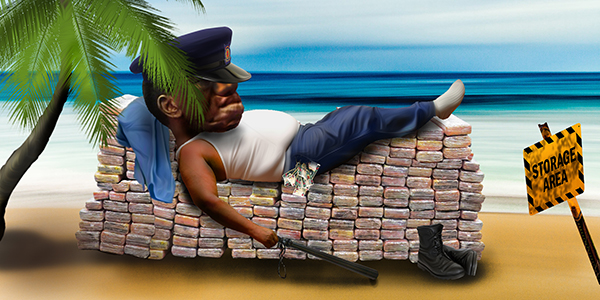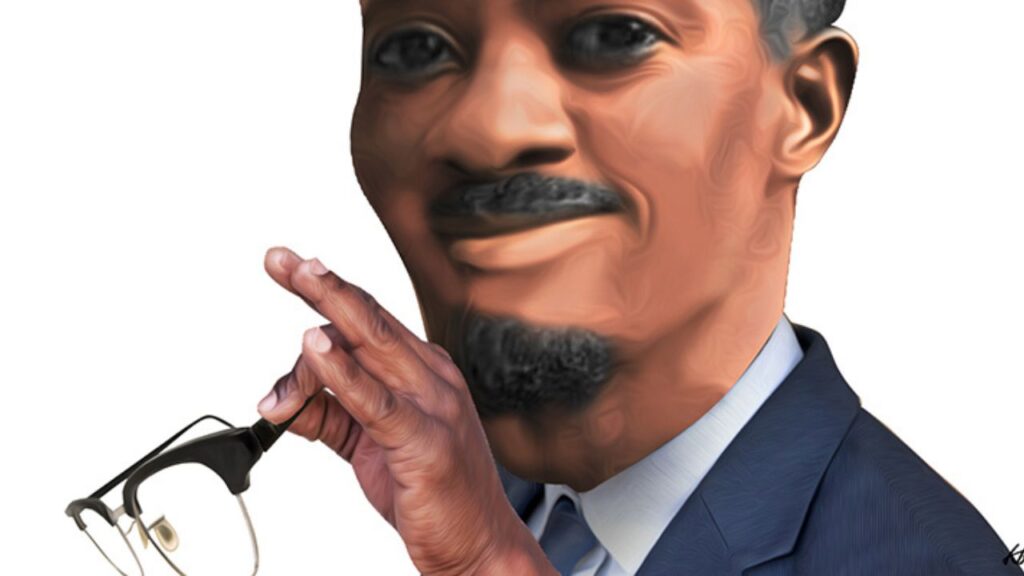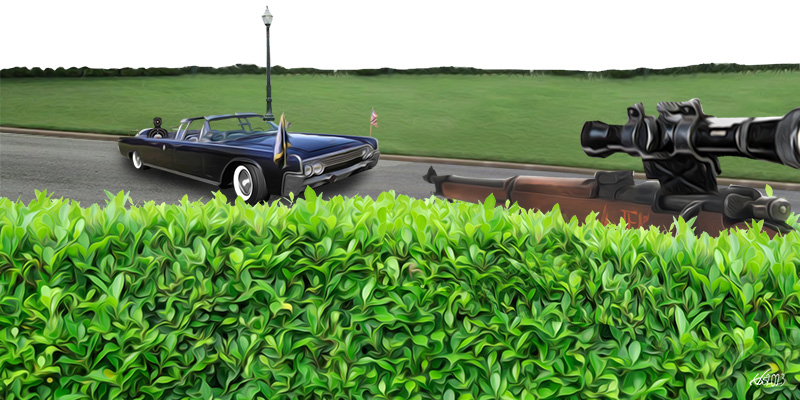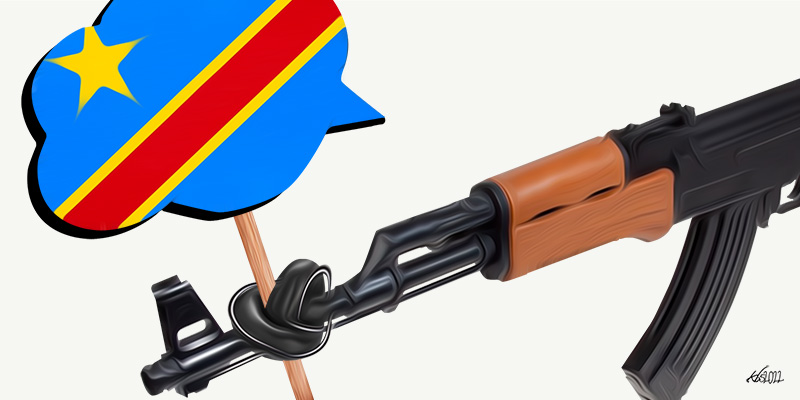Nairobi, Kenya – YOUR SHIP HAS SAILED INTO PORT
In September 2015, a ship called the Hoegh Transporter called at the port of Mombasa. Kenyan police promptly detained the Norwegian-flagged ship and arrested its Filipino crew. Investigators then started a systematic search for drugs in the vessel.[1]
A few weeks earlier, the 1999-built vehicle-carrier had left the port of Hitachi in Japan with a consignment of cars meant for the United Nations peacekeeping forces in the Democratic Republic of Congo.[2] It then called at ports in Korea, Dubai and Mumbai. At this last port, according to some of the original reports, the crew hid guns and drugs within its 3,983-vehicle cargo.
The UN claimed the consignment of undeclared guns, but no drugs were ever found. [3]The ship and crew were released after a week, ending hopes of what would have been the most important drug seizure in East African history. Its presence on such a prominent commercial ship would have helped explain how Kenya now fits into the global narco-trade.
In that same half of the year, the Australian Navy had seized two ships off the Kenyan Coast with 787kg of heroin. Another 342kg was found in the tank of a ship at the Mombasa port. No one seemed to know whether the increasing seizures around the East African Coast meant enforcement was working better, or drug cartels were moving more drugs, or both.
Among the most prominent emerging routes are through West and East Africa, sometimes called the ‘Smack Track’. West Africa’s proximity to Europe, and the presence of a cluster of unstable states, made it the first choice for Latin American smugglers seeking new routes
Originally, heroin made from Afghanistan poppy found its way to markets in Europe through Pakistan, Iran or Central Asia. Across the world, coca from Peru and neighbouring countries found its way to labs in Colombia, then moved into the United States through Mexico, Panama and Venezuela. [4]The idea behind these smuggling routes was cover, since shipments from narco-states would automatically attract more attention.
As each advancement in drug enforcement dented these established routes, the business evolved. Among the most prominent emerging routes are through West and East Africa, sometimes called the ‘Smack Track’. West Africa’s proximity to Europe, and the presence of a cluster of unstable states, made it the first choice for Latin American smugglers seeking new routes.
The investments they made in building this gateway to Europe were astounding. In 2009 for example, a Boeing 727 crash-landed after taking off from a makeshift runway in the Mali desert. Its drug cargo had already been emptied and the crew escaped before the smoking hull was found.[5]
LOOKING SOUTH: THE EAST AFRICAN ROUTE
Increased policing and competition meant smugglers began to look farther south, to the East African Coast. Since the early 1980s, East Africa had been used as a minor transit point for heroin.[6] Heroin smugglers had to innovate faster than their cocaine contemporaries because for a time American authorities didn’t think cocaine was as bad as heroin.
Kenyan and Tanzanian ports and airports became increasingly attractive to smugglers seeking a circuitous route to Europe and America. Data from the United Nations Office on Drugs and Crime shows that the biggest seizures of heroin in the 1980s were of 20kg in 1987 and 44.39kg in 1990. Both were moved through airways, but a much bigger operation was happening at the port.
The most notable of this generation of drug smugglers was Ibrahim Akasha. Using his transport network, he expanded the delivery of mostly heroin into Europe, particularly through Amsterdam. Among his drug connects in Amsterdam were Yugoslav and Dutch cartels involved in distribution. [7]
In Pakistan, he had a network proven heroin supplier, and completed the network with a system of bribery and intimidation in Mombasa. His European partners handled their home ports, and the only task then was making each shipment count. One of the most colourful episodes in his underworld infamy was an unproven the story that he had once smuggled a single shipment of five tonnes of drugs into Europe.
By the time he was shot on a Dutch street in 2001, Akasha was at the top of the food chain. He had a Yugoslav man shackled in one of his houses in Kenya for not paying him, and his death triggered a war of attrition in the narcotics world. It also ended what could easily have been Kenya’s first drug cartel.
Three years later, in 2004, drug enforcement agencies staged a coordinated raid on a warehouse in Nairobi and a home in Malindi. Several hundred kilogrammes of cocaine had been nabbed in Amsterdam in containers originating from Kenya, triggering a chain of events that ended with the seizure of 1.1 tonnes of cocaine.[8] Only one person, David Mugo, was ever jailed in Kenya. His brother, George Kiragu, in whose name most of the paperwork appeared, was jailed in Amsterdam. They were the faces of the operation,[9] but it’s most likely the huge consignment had more than one owner.
ENTER THE FAMILY
The presence of the larger portion of the shipment in Malindi, in a house leased from an Italian couple, suggested that the Italian community in the Coastal city were involved in the trade. It had long been suspected that the Italian Mafia expanded to the Kenyan Coast, using it mainly for money laundering and hiding wanted criminals, but also to ship drugs. The Italian couple were acquitted, but the suspicion of Mafia involvement in Kenya’s drug trade lingers.
The Mafia would have been crucial in accessing European markets. The size of the shipment meant that this was not a virgin route. Since the late 1980s, increased American enforcement had complicated that traditional market, forcing even South American markets to seek new markets in Europe. To get access to these, they piggybacked on established heroin routes. Since this was technically a new and rather long route, they could move massive amounts of narcotics undetected. Initial intelligence about the drugs from European enforcement agencies suggested a multi-tonne shipment, and it is likely most of it was moved and hidden before the raid.[10]
Less than two years later, two men claiming to be Armenians entered Kenya. The Armenians brought in a team of six Eastern Europeans, and hired two Tanzanians as bodyguards. They quickly began moving in the highest circles of Kenyan society. All 10 would be deported without trial, and their true mission remained a matter of conjecture. Their official cover had been that they had been hired to train an anti-narcotics team, but US diplomatic cables from as early as March 2006, later leaked by Wikileaks, show they were known enforcers for the Russian Mafia. This brought in a whole new angle to just how many interests were involved in the 1.1 tonne cocaine haul.
By the time he was shot on a Dutch street in 2001, Akasha was at the top of the food chain. His death triggered a war of attrition in the narcotics world. It also ended what could easily have been Kenya’s first drug cartel
To observers of the narcotics trade, the possible involvement of the Russian and Italian Mafias meant the East African supply line was more important than previously thought. Still, the connection with South American cartels remains mostly obscure, perhaps because of the existence of several lines of criminal control between Kenyan dealers and Colombian ones. What’s most revealing about the narcotics business is the mainstay of Kenya’s smugglers, heroin.
One of the men arrested with the Akasha sons in 2014, Gulam ‘the Old Man’ Hussein, is said to be a heroin smuggling genius.[11] The other, Vijay Goswami, had served a long jail sentence for drug possession in Dubai, and is wanted in his home country, India, for suspected drug links. His criminal profile shows extensive tentacles in the drug supply world, making Goswami the guy who knows everyone, and Gulam the one who organised transportation.[12] Gulam has quite a profile, which included an 800kg haul of heroin seized off the Coast of Kenya in July 2014 and poured into the sea.
For the deal that got them nabbed, they had moved 98kg of heroin as a sample to their new Moroccan connection to test and ship to the United States. While they couldn’t satisfy the meth part of the deal, their heroin delivery suggests they could have moved a lot more.
What’s more interesting with this case is that the sale, not just the transit, was happening in Kenya. The Akashas had sourced the heroin from a Pakistani cartel led by a man simply known as ‘The Sultan,’ smuggled it into Kenya, and then sold it to a Moroccan man to smuggle into the United States. These were two different main nodes meeting, and perhaps one of the most visible instances of how the drug underworld in Kenya works. Most of this business was done in Nairobi and not Mombasa, which had long been thought to be the epicentre of the narcotics trade in Kenya.
LINES OF CRIMINAL CONTROL
In the 1990s, Kenya’s growth as a drug route attracted many new players. It’s impossible to control the entire supply chain, so they drew up lines of criminal control and outsourced key functions. They operated as a competitive network, with different nodes that one report titled Termites at Work: Transnational Organised Crime and State Erosion in Kenya called kampuni.
The report, published in A report from September 2011, Termites at Work: Transnational Organised Crime and State Erosion in Kenya, estimated that ‘there were at least 10 major international drug trafficking networks’ in Kenya.
Each snuggles into a part of the supply chain it can profitably control, and then makes its own contacts with others inside and outside the country. They have the same basic structure of a small company complete with accountants, packers, and peddlers. They tend to involve people with familial connections, as ties of blood or marriage are one way the narcotics business ensures loyalty.
Since most of the drugs shipped through Kenya are in transit, their purity is often over 80 per cent. Some of it is diluted and repackaged either for shipment, but most of it is simply repackaged. There’s evidence now that some dealers are smuggling in low purity narcotics for distribution and sale locally.
Some nodes play one role only, such as providing the repackaging service to other smugglers. Others, such as Naima Nyakinywa or ‘Mama Leila,’ provide supplies for the smuggling and repackaging units, as middlemen to middlemen. Mama Leila was named by the US Treasury as a key player in Kenya’s drug underworld only a few months before she was arrested in Dar es Salaam.[13] Vijay Goswami, the Indian man arrested with the Akashas, has been linked to several hauls in India of mostly precursor ingredients to processing other drugs. One of his plans was to start and run a mega methamphetamine laboratory in Kenya similar to one that was closed around the same time in Nigeria.[14]
Some nodes focus solely on smuggling, recruiting mules and sending them on delivery missions across the world. Compared with the massive shipments via the port, at one point estimated to have been at least one per week, the mules move minute amounts. It’s likely that they are hired by nodes at the periphery, who are paid for their work in narcotics that they dilute and repackage for sale.
In 2002, a Kenya Airways cabin crew member called Priscillah Kolongei was arrested carrying 27kg of heroin from Mumbai to Nairobi. She had been smuggling drugs since 1997, and her arrest was followed by a purge within the airline of suspected mules. Between 2004 and 2010, narcotics smugglers started hiring mules outside the usual groups of cabin crew. They focused on young unemployed women, white expatriates, and non-white holders of valid US visas. China currently has over 70 Kenyans in jail on drug smuggling charges. A Kenyan socialite was arrested and jailed in Kumasi, Ghana and another, Margaret Njeri, ended up in a Brazilian jail where she died in 2009.
It’s also possible that the much larger shipments by air, into and out of Kenya, are not caught because smugglers have reduced reliance on commercial flights. A similar thing happened at the port, where smugglers would offload on the high seas and head out on small motorboats to remote islands near Lamu and Pemba, away from centralised policing. To do this, smugglers avoided international airports they didn’t have connections or those like the Jomo Kenyatta International Airport that had enhanced anti-narcotics enforcement.
For this entire network to survive, it needs protection. The most common form in Kenya is political protection, although a few politicians have been named as being involved in the drug trade itself. The oldest name on the list is John Harun Mwau, an uber-rich politician and businessman who has been investigated by Kenyan and American governments. Other politicians and public figures who have been suspected of involvement in narcotics include Mombasa Governor Hassan Joho and his publicity-shy brother Abubakar Joho, as well as current Kiambu Governor William Kabogo and current Nairobi Senator Mike Sonko his brothers, although the suspicions have never been proven. One of their similarities, other than vast amounts unclear sources of wealth, is that they have been associated with owned or operated transport or as well as clearing and forwarding companies.
To observers of the narcotics trade, the possible involvement of the Russian and Italian Mafias meant the East African supply line was more important than previously thought. Still, the connection with South American cartels remains mostly obscure
Outside of the possible direct involvement of politicians, political and police connections normally have auxiliary protection roles. The entry of the Armenian brothers in 2006 was facilitated by among others Mary Wambui, the president’s second wife, and her daughter. In the years after the story died, Wambui confessed under oath to having known the Armenians, but didn’t explain why they had come to Kenya. The role of politicians and law enforcers in the Armenian mission seems to have been peripheral, with serious undercurrents that made the two men untouchable.
THE LOS PEPES EASTER EGG?
The loose nature of the narcotics economy in the region makes it hard to dissect direct connections. But at times they seem almost brazen. After the December 2004 cocaine haul, investigators raided a warehouse owned by Pepe Enterprises Ltd, a company associated with owned by John Harun Mwau. The name of the company is interesting, in a macabre sense. It triggers memories of Los Pepes, a group of vigilantes who dedicated their lives to hunting down Colombian drug lord extraordinaire Pablo Escobar in the early 1990s. The name itself came from the phrase “Perseguidos por Pablo Escobar” (persecuted by Pablo Escobar). Officially, more than once, Mwau has been named as a key connection between Kenya and the South American narcotic trade, from as early as the days of Escobar’s Medellin Cartel.
Although Los Pepes was officially a civilian vigilante group, it was funded by the Cali Cartel, which had broken away from Escobar’s Medellin group in the late 1980s. In the years after Escobar died, the Cali Cartel thrived, controlling over 90 per cent of the global cocaine market. As they expanded into Europe, they made business relationships with the heroin smuggling world, and shared distribution centres.
By the mid-1990s, the Cali Cartel controlled 90 per cent of Europe’s cocaine market too, meaning they pioneered and probably expanded the Smack Track cocaine route through Kenya, Tanzania and West Africa. If there was any South American cartel with the ability to smuggle massive amounts of cocaine into Kenya in the early 2000s, it was the Cali Cartel.
[1] http://www.hoeghautoliners.com/news-and-media/news-and-press-releases/h%C3%B6egh-transporter-in-mombasa-kenya-update-23-september
[2] http://www.hoeghautoliners.com/news-and-media/news-and-press-releases/undeclared-weapons-in-un-shipment-cause-of-detention-of-h%C3%B6egh-transporter
[3] ibid
[4] http://www.economist.com/news/middle-east-and-africa/21639560-east-african-states-are-being-undermined-heroin-smuggling-smack-track
[6] https://data.unodc.org/#state:
[7] https://www.standardmedia.co.ke/article/2000100784/akasha-death-opened-a-peek-into-kenyan-drug-dealings
[8] https://www.unodc.org/cld/case-law-doc/drugcrimetype/ken/criminal_case_no_1365_of_2004.html
[9] Ibid
[10] https://www.unodc.org/cld/case-law-doc/drugcrimetype/ken/criminal_case_no_1365_of_2004.html
[11] https://wikileaks.org/plusd/cables/06NAIROBI2782_a.html
[12] https://www.justice.gov/usao-sdny/press-release/file/933901/download
[13] http://www.thecitizen.co.tz/News/national/High-profile-drug-trial-to-start-afresh/1840392-2418504-w3h73rz/index.html
[14] https://www.justice.gov/usao-sdny/press-release/file/933901/download








